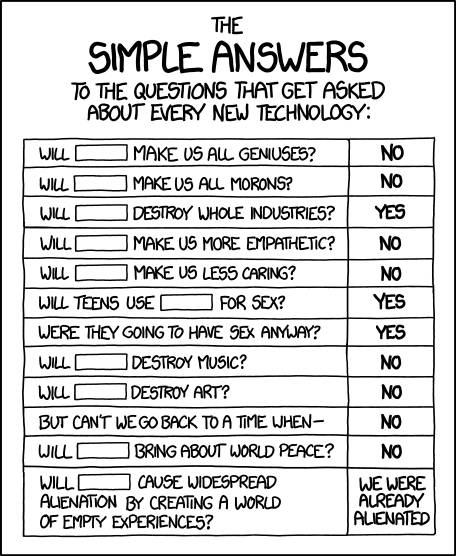As
I was reading N. Katherine Hayles’ book How
We Think, I noticed that it not only aims to emphasize the collaborative
nature of DH, but also that the book itself is structured to recreate that
collaboration. The book is dotted with interviews and multiple perspectives;
what this tells me, as a reader, is that Hayles herself sees the value in a
crowded academic conversation. If we are truly to embrace the ways in which DH
asks us to change our scholarly approaches, then we should also think about how
those changes might manifest in even our traditional print scholarship.
I
found a lot to reflect on and appreciate in How
We Think, but I was most struck by a passage in Chapter 2 about the
theoretical implications of coding:
On the human
side, the requirement to write executable code means that every command must be
explicitly stated in the proper form. One must therefore be very clear about
what one wants the machine to do. For Tanya Clement…this amounts in her
evocative phrase to an “exteriorization of desire.” Needing to translate desire
into the explicitness of unforgiving code allows implications to be brought to
light, examined, and modified in ways that may not happen with print. At the
same time, the nebulous nature of desire also points to the differences between
an abstract computational model and the noise of a world too full of
ambiguities and complexities to be captured fully in a model. (42)
Hayles
is right; exteriorization of desire
is an evocative phrase, and a wonderfully challenging one. What does it mean to
really lay your scholarly cards on the table? How does research change when it
must be recorded step-by-step? What might we do differently when we channel our
searches and queries through a computer that needs to be guided to results?
Though
I would never have though to articulate it this way, I think I have encountered
this need to question the implications or functions of my research as I’ve dipped
my toes into the water of digital projects. One example that immediately comes
to light is mark-up: what aspects of a text do you as a scholar choose to mark,
and therefore emphasize, when you digitize? What do those focuses allow you to
study? Mark-up, too, is often the first step. Therefore, there are decisions
that must be made before certain types of analysis or exploration can even
begin. Mark-up can also impact a wide audience of readers and researchers, in
terms of what can be searched and returned about a certain text or collection
of texts. Encoding standards have all kinds of political weight—in some ways,
it is the same type of weight that has always come with editorial decisions,
but I think there are also some differences. As our possible scope widens—more
texts, more search power, more computing force—the decisions that guide the
possibilities become exponentially more important.
But,
on the other hand…
Does
the act of coding fundamentally change the type of research question we can (or
should) ask? Previous readings in our seminar have touched on the concept of meaningful failure in DH work, and I
think it’s relevant in this context as well. If each step of our research must
be explicitly coded, we are crafting for ourselves a specific path. Eventually,
that path will either lead to fruitful results, or it will lead to a dead end
that will, itself, tell us something about what we asked. Either way, though,
the code has been written. It is a more solid-seeming process than perhaps some
traditional avenues of research—perhaps it is that there is more evidence left
of our various attempts to find patterns or meaning?
Hayles
is right, I think, that the world of the humanities is one full of noise; I
also think that the conflict between that noise and the need to explicitly
state our research desires will continue to be an important point of tension,
and I don’t think that we should strive to completely erase that tension. Like
following the upward arc of a bell curve, tension up to a certain threshold can
push us to be better, and to inquire more not only about the information in
front of us, but also about our own motivations for asking the questions we
ask.
